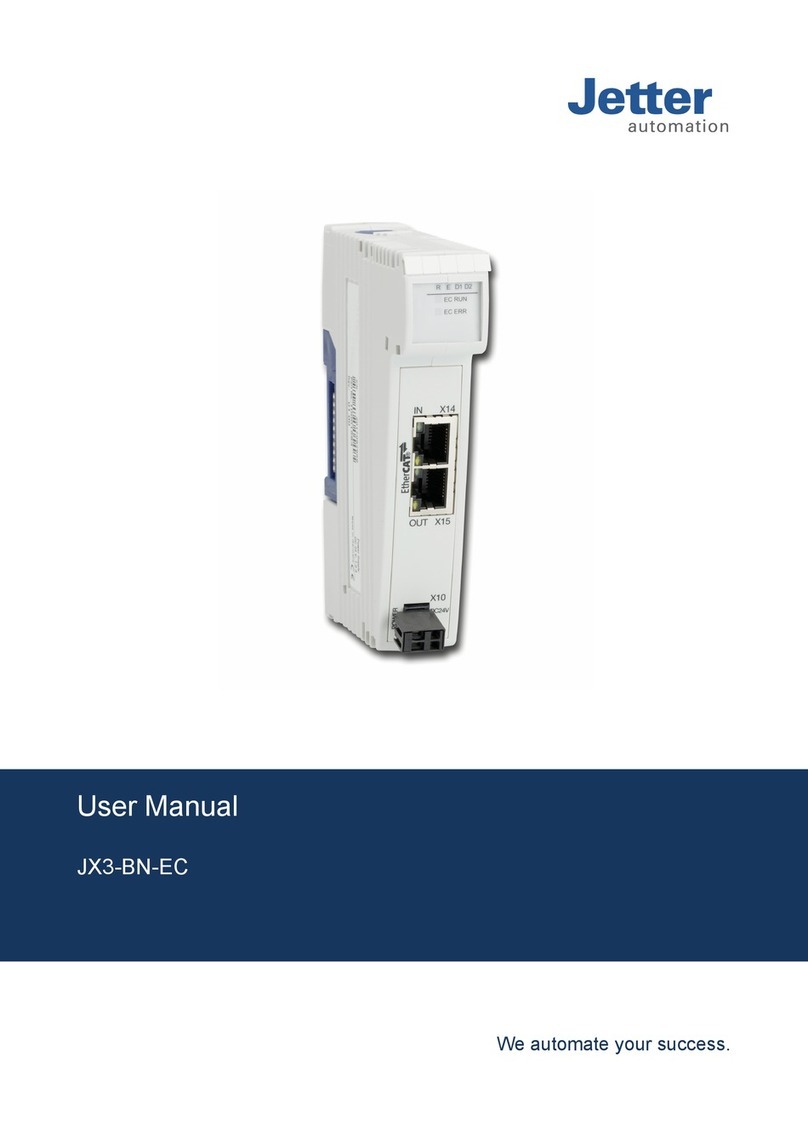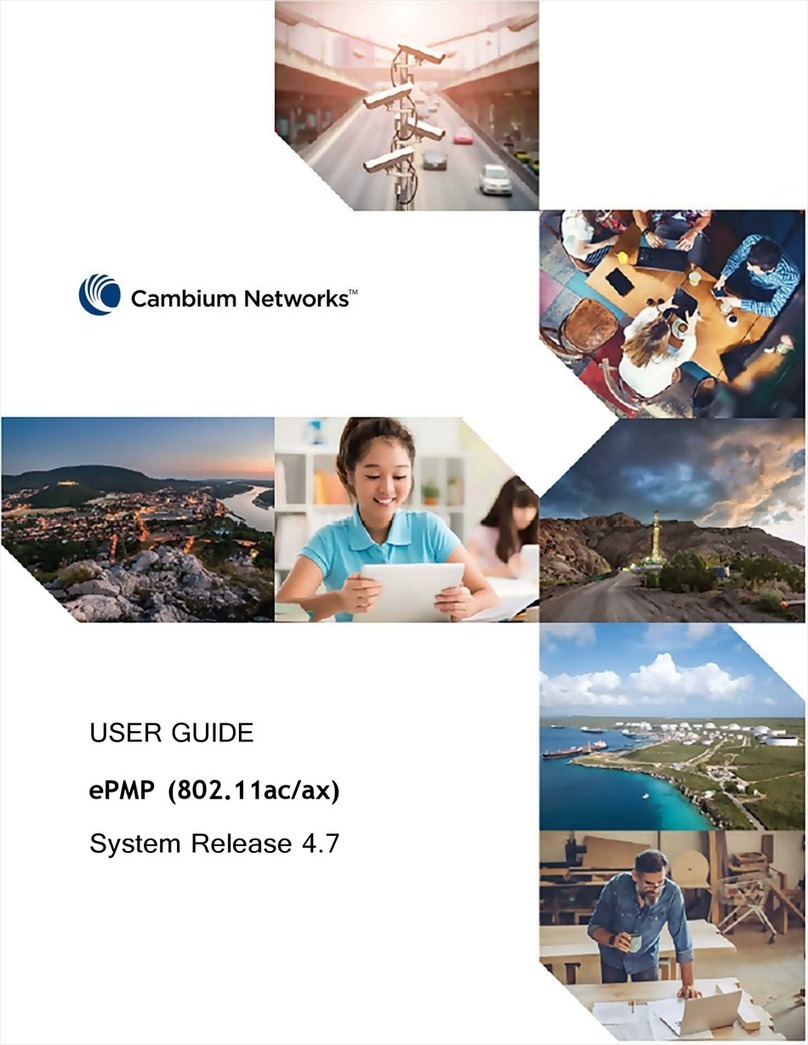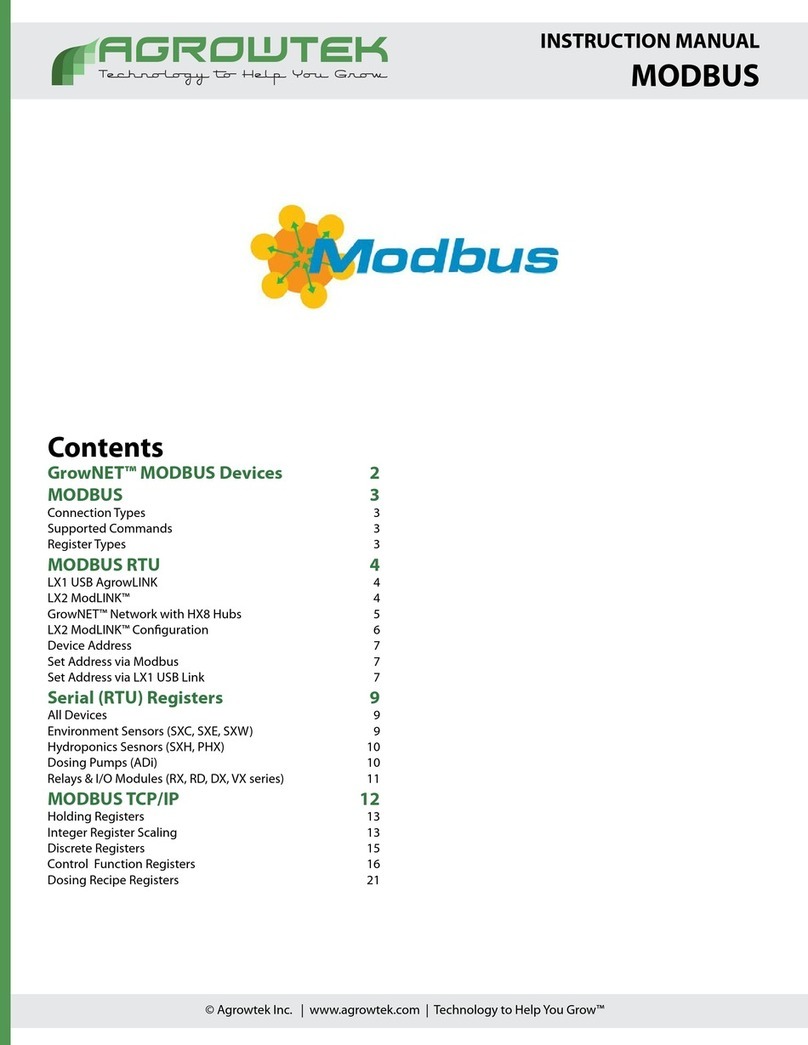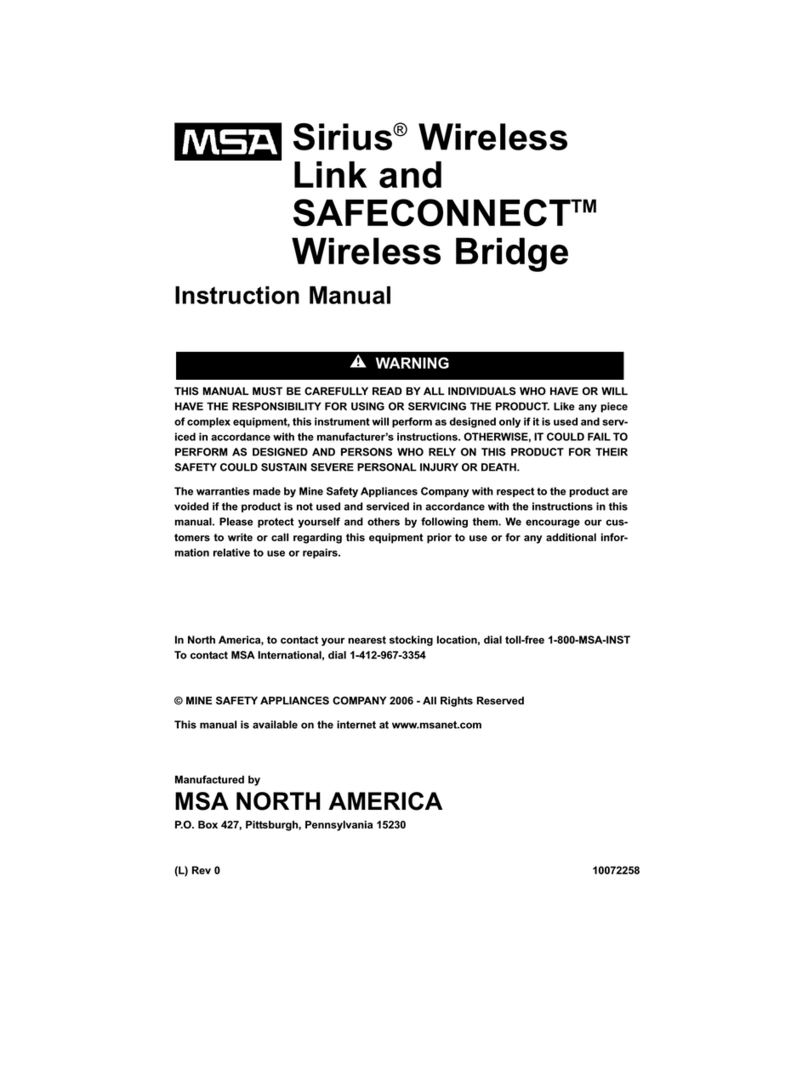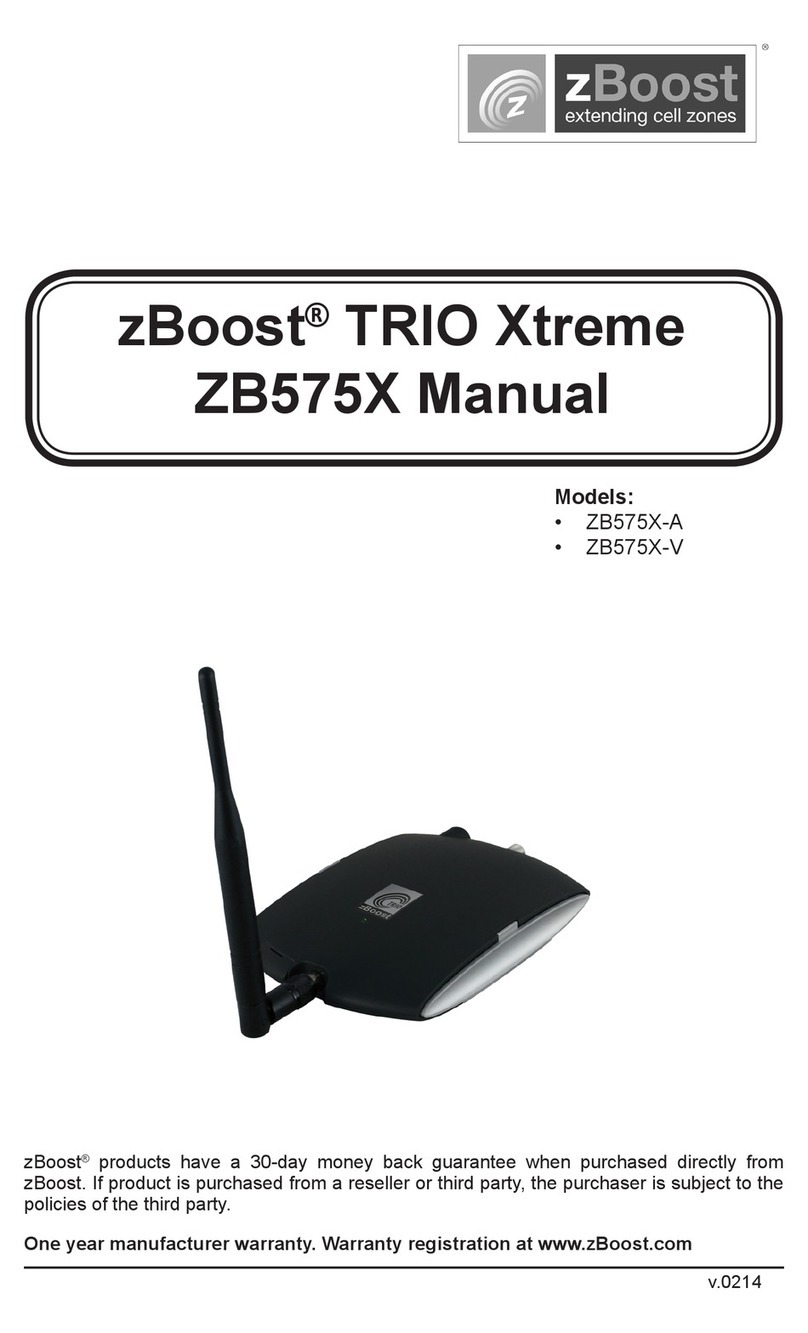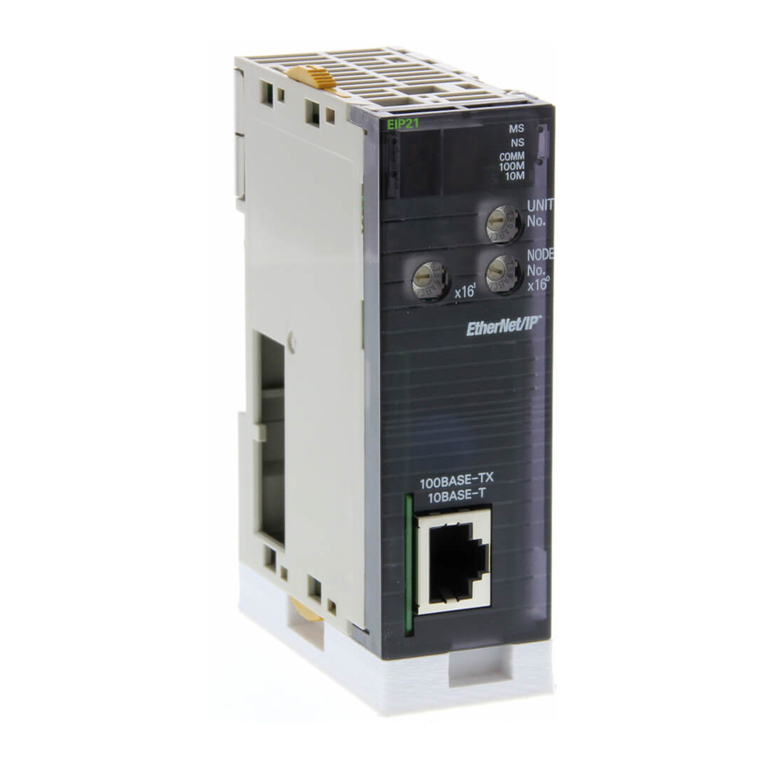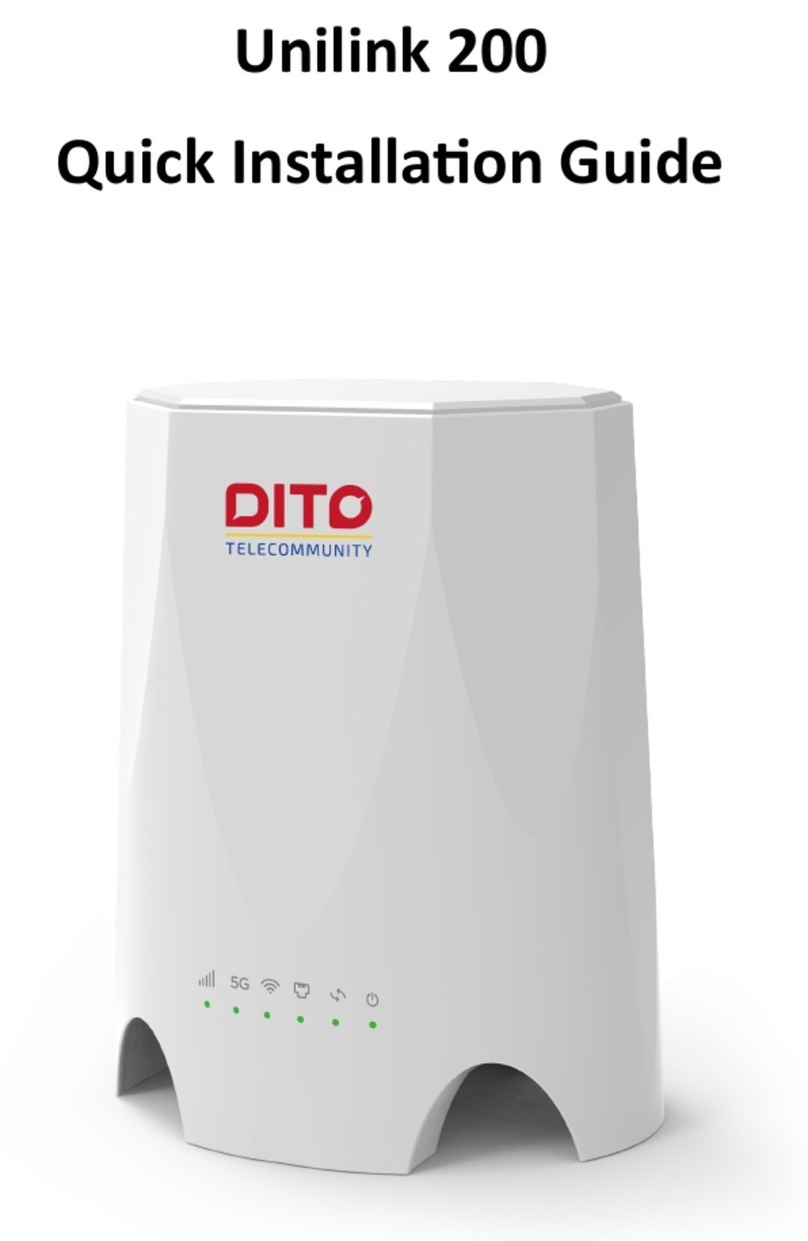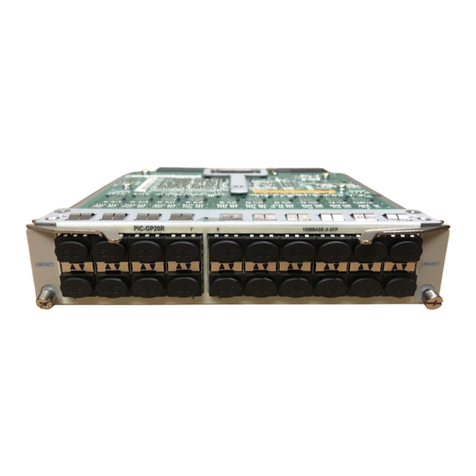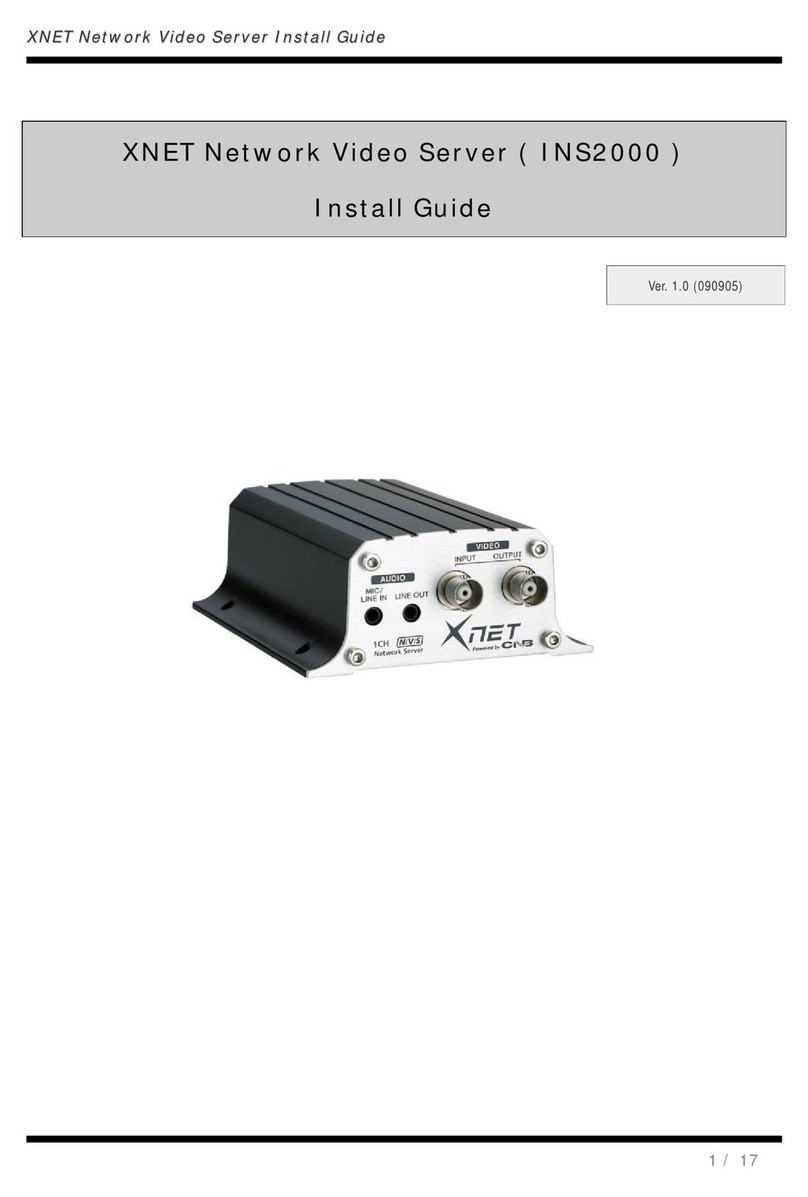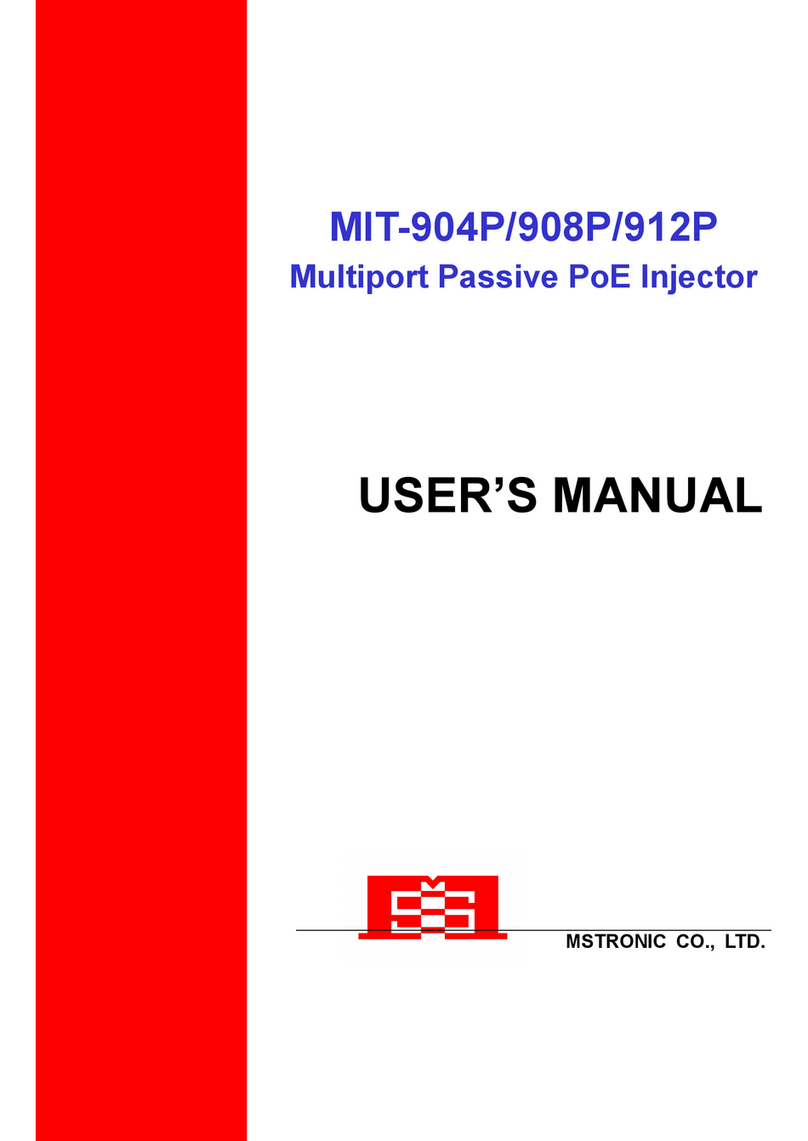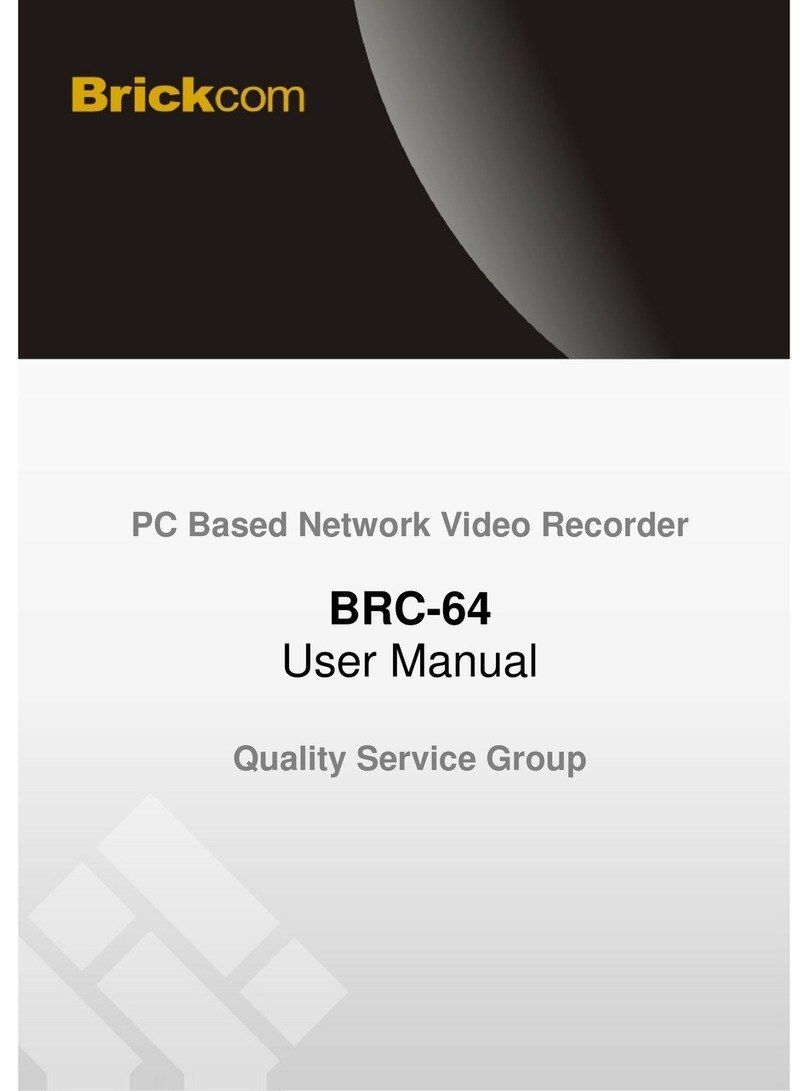Jetter JetWeb JX2-PR0FI1 User manual

Article# 608 641 01November 2002 / Printed in Germany

JX2-PROFI1 Table of Contents
Jetter AG 2
Table of Contents
1 Safety Instructions 8
1.1 Ensure Your Own Safety 10
1.2 Instructions on EMI 11
1.3 Device Specific Prevention of Risks 12
1.3.1 Connecting Two PROFIBUS Participants 12
1.3.2 The Use of Specific Connectors 12
2 Physical Dimensions 14
3 Operating Parameters 16
4 Technical Data 20
5 The Communication Module JX2-PROFI 22
5.1 The LEDs of the JX2-PROFI Module 22
5.2 Pin Assignment of the Male SUB-D PROFIBUS Connector 22
5.3 Features 23
5.4 The Registers of the JX2-PROFI1 Module 24
5.4.1 Definitions 24
5.4.2 Configuring the JX2-PROFI1 25
5.4.3 Overview of the JX2-PROFI Registers 26
5.4.4 Register Description 28
6 Description of Operations 42
6.1 Buffer Configuration 42
7 The Services 44
7.1 Acyclic Services 44
7.2 Description: "Read Data Block" 44
7.3 Description: "Write Data Block" 45
7.4 Access to the data registers of the acyclic services besides a
request made by the master 45
7.5 Calculation of the Maximum Data Lengths 46
7.6 Diagnose 47
7.6.1 Registers for Diagnose Data 47
7.6.2 Commands for the Transmission of Diagnose Data 48
7.6.3 Transmission of Diagnose Data from the Master’s Point of View 48
7.6.4 Survey of the Entire Range of Diagnose Data Registers 49
8 Sample Programs 50

JX2-PROFI1 Table of Contents
Jetter AG 4

JetWeb
5Jetter AG
Edition 2.0
Jetter AG reserves the right to make alterations to its products in the interest of
technical progress. These alterations need not be documented in every single case.
This manual and the information contained herein have been compiled with due
diligence. However, Jetter AG assumes no liability for printing or other errors or
damages arising from such errors.
The brand names and product names used in this manual are trade marks or
registered trade marks of the respective title owner.

JX2-PROFI1
Jetter AG 6
How to Contact us:
Jetter AG
Gräterstraße 2
D-71642 Ludwigsburg
Germany
Telephone - Switchboard: ++49 7141/2550-0
Telephone - Sales: ++49 7141/2550-530
Phone - Technical Hotline: ++49 7141/2550-444
Telefax: ++49 7141/2550-425
E-Mail - Sales: sales@jetter.de
E-Mail - Technical Hotline: hotline@jetter.de
Internet Address: http://www.jetter.de
This Manual is an Integral Part of the
JetControl Module JX2-PROFI1:
To be entered by the customer:
© Copyright 2002 by Jetter AG. All rights reserved.
Model:
Serial Number:
Year of Manufacture:
Order Number:
Inventory Number:
Place of Operation:

JetWeb
7Jetter AG
Significance of this Operator’s Manual
This manual is an integral part of the JX2-PROFI1 module, and
•must be kept in a way that it is always at hand until the JX2-PROFI1 module will
be disposed of;
•if the JX2-PROFI1 module is sold, alienated or loaned, this manual must be
handed over.
In any case you encounter difficulties to clearly understand the manual, please
contact the manufacturer.
We would appreciate any kind of suggestion and contributions on your part and
would ask you to inform or write us. This will help us to produce manuals that are
more user-friendly and to address your wishes and requirements.
From this JX2-PROFI1 module may result unavoidable residual risks to persons and
property. For this reason, any person who has to deal with the operation, transport,
installation, maintenance and repair of the JX2-PROFI1 module must have been
familiarised with it and must be aware of these dangers.
Therefore, this person must carefully read, understand and observe this manual, and
especially the safety instructions.
Missing or inadequate knowledge of the manual results in the loss of any claim of
liability on part of Jetter AG. Therefore, the operating company is recommended to
have the instruction of the persons concerned confirmed in writing.

JX2-PROFI1 1 Safety Instructions
Jetter AG 8
TableofContents
The N-
PID 1
moduleis
in line
with the
current
state of
the art.
This N-
PID 1
module
complies
with the
safety
regulatio
ns and
standard
s in
effect.
Special
emphasis
wasgiven
to the
safety of
the users.
1 Safety Instructions
The JX2-PROFI1 module is in line with the current state of the art. The JX2-PROFI1
module complies with the safety regulations and standards in effect. Special
emphasis was given to the safety of the users.
Of course, the following regulations apply to the user:
•relevant accident prevention regulations;
•accepted safety rules;
•EC guidelines and other country-specific regulations.
Usage as Agreed Upon
Usage as agreed upon includes operation in accordance with the operating
instructions.
The JX2-PROFI1 module is used to control machinery, such as conveyors,
production machines, and handling machines.
The supply voltage of the JX2-PROFI1 module is DC 24 V . This operating voltage
is classified as SELV (Safety Extra Low Voltage). The JX2-PROFI1 module is
therefore not subject to the EU Low Voltage Directive.
The JX2-PROFI1 module may only be operated within the limits of the stated data.
Usage Other Than Agreed Upon
The JX2-PROFI1 module must not be used in technical systems which to a high
degree have to be fail-save, e.g. ropeways and aeroplanes.l
If the JX2-PROFI1 module is to be run under surrounding conditions, which differ
from the conditions mentioned below, the manufacturer is to be contacted
beforehand.
Who is Permitted to Operate the JX2-PROFI1 Module?
Only instructed, trained and authorised persons are permitted to operate the JX2-
PROFI1 module.
Mounting and backfitting may only be carried out by specially trained personnel, as
specific know-how will be required.
Maintaining the JX2-PROFI1 Module
The JX2-PROFI1 module is maintenance-free. Therefore, for the operation of the
module no inspection or maintenance are required.
Decommissioning and Disposal of the JX2-PROFI1
Module
Decommissioning and disposal of the JX2-PROFI1 module are subject to the
environmental legislation of the respective country in effect for the operator's
premises.

1 Safety Instructions JetWeb
9Jetter AG
Descriptions of Symbols
Danger
This sign is to indicate a possible impending danger of serious physical damage
or death.
Caution
This sign is to indicate a possible impending danger of light physical damage.
This sign is also to warn you of material damage.
Important!
This sign is to indicate a possible impending situation which might bring damage
to the product or to its surroundings.
Note!
You will be informed of various possible applications and will receive further
useful suggestions.
·/ - Enumerations are marked by full stops, strokes or scores.
Operating instructions are marked by this arrow.
Automatically running processes or results to be achieved are marked by this
arrow.
Illustration of PC and user interface keys.

JX2-PROFI1 1 Safety Instructions
Jetter AG 10
1.1 Ensure Your Own Safety
Modifications and Alterations to the Module
For safety reasons, no modifications and changes to the JX2-PROFI1 module and
its functions are permitted. Any modifications to the module not expressly authorised
by the manufacturer will result in a loss of any liability claims to Jetter AG.
The original parts are specially designed for the JX2-PROFI1 module. Parts and
equipment of other manufacturers are not tested on our part, and are, therefore, not
released by us. The installation of such parts may impair the safety and the proper
functioning of the JX2-PROFI1 module.
For any damages resulting from the use of non original parts and equipment any
claims with respect to liability of Jetter AG are excluded.
Malfunctions
Information Signs and Labels
Disconnect the JX2-PROFI1 module from the mains to carry out
maintenance work. By doing so, you will prevent accidents resulting from
electric voltage and moving parts.
Safety and protective devices, e.g. the barrier and cover of the terminal
box must never be shunted or by-passed.
Dismantled protective equipment must be reattached prior to
commissioning and checked for proper functioning.
Malfunctions or other damages are to be reported to an authorised person
immediately.
Safeguard the JX2-PROFI1 module against misuse or accidental use.
Only qualified experts are allowed to carry out repairs.
Writings, information signs, and labels always have to be observed and
kept readable.
Damaged or unreadable information signs and labels are to be
exchanged.

1 Safety Instructions JetWeb
11 Jetter AG
1.2 Instructions on EMI
The noise immunity of a system corresponds to the weakest component of the
system. For this reason, correct wiring and shielding of the cables is important.
Fig. 1: Shielding of SUB-D connectors in conformity with the EMC standards.
Important!
Measures for increasing immunity to interference:
On principle, physical separation should be maintained between signal
and voltage lines.
Shield both sides of the cable.
The entire shield must be drawn behind the isolation, and then be clamped
under an earthed strain relief with the greatest possible surface area.
When male connectors are used:
Only use metallised connectors, e.g. SUB-D with metallised housing.
Please take care of direct connection of the strain relief with the housing
here as well (refer to Fig. 1).

JX2-PROFI1 1 Safety Instructions
Jetter AG 12
1.3 Device Specific Prevention of Risks
1.3.1 Connecting Two PROFIBUS Participants
1.3.2 The Use of Specific Connectors
Danger
If two PROFIBUS participants being distant from each other are to be connected,
please make sure they have got the same potential.
Danger
Only connectors specified as PROFIBUS connectors may be used, as they
should already have been equipped with the terminating resistor, which can be
activated with the help of a special switch.
For baud rates that are greater than 1.5 MBaud, specific PROFIBUS connectors
for the reduction of cable capacitances must be applied.
Only use cables which have been specified as cable type A in the PROFIBUS
Standard EN 50 170.
The maximum cable lengths defined in the PROFIBUS Standard EN 50 170 must
be maintained.

1 Safety Instructions JetWeb
13 Jetter AG

JX2-PROFI1 2 Physical Dimensions
Jetter AG 14
2 Physical Dimensions
Fig. 2: Front View - JX2-PROFI1

JetWeb
15 Jetter AG
Fig. 3: Side View - JX2-PROFI1
Fig. 4: Top View - JX2-PROFI1

JX2-PROFI1 3 Operating Parameters
Jetter AG 16
3 Operating Parameters
Environmental Operating Parameters
Parameter Value Reference
Operating
Temperature Range 0 °C through 50 °C
StorageTemperature
Range -25 °C through +70 °C DIN EN 61131-2
DIN EN 60068-2-1
DIN EN 60068-2-2
Air Humidity /
Humidity Rating 5 % to 95 %
No condensing DIN EN 61131-2
Pollution Degree 2 DIN EN 61131-2
Corrosion Immunity/
Chemical Resistance No special protection against
corrosion. Ambient air must be
freefromhigherconcentrations
of acids, alcaline solutions,
corrosive agents, salts, metal
vapours, or other corrosive or
electroconductive
contaminants.
Operating Altitude Up to 2000 m above sea level DIN EN 61131-2
Mechanical Operating Parameters
Parameter Value Reference
Free Falls
Withstanding Test Height of fall (units within
packing): 1 m DIN EN 61131-2
DIN EN 60068-2-32
Vibration Resistance
10 Hz - 57 Hz: with an amplitude
of 0.0375 mm for continuous
operation (peak amplitude of
0.075 mm)
57 Hz -150 Hz: 0.5 g constant
acceleration for continuous ope-
ration (1 g constant acceleration
as peak value),
1 octave per minute,
10 frequency sweeps
(sinusoidal), all three spatial
axes
DIN EN 61131-2
DIN EN 60068-2-6
Shock Resistance 15 g occasionally, 11 ms,
sinusoidal half-wave, 2 shocks
in all three spatial axes
DIN EN 61131-2
DIN EN 60068-2-27
Degree of Protection IP20, rear: IP10 DIN EN 60529

JetWeb
17 Jetter AG
Mounting Position Any position, snapped on DIN
rail
Mechanical Operating Parameters
Operating Parameters - Electrical Safety
Parameter Value Reference
Class of Protection III DIN EN 61131-2
Dielectric Test
Voltage Functionalgroundisconnected
to chassis ground internally. DIN EN 61131-2
Overvoltage Category
II DIN EN 61131-2
Operating Parameters (EMC) - Emitted Interference
Parameter Value Reference
Enclosure Frequency 30 -230 MHz,
limit 30 dB (µV/m)
at 10 m distance
frequency band 230-1000
MHz, limit 37 dB (µV/m)
at 10 m distance
(class B)
DIN EN 50081-1
DIN EN 55011
DIN EN 50081-2
Operating Parameters (EMC) - Immunity to
Interference of Housing
Parameter Value Reference
RF field, amplitude-
modulated Frequency band 27 - 1000
MHz
Test field strength 10 V/m
AM 80 % with 1 kHz
Criterion A
DIN EN 61131-2
DIN EN 61000-6-2
DIN EN 61000-4-3
Electro-magnetic HF
field, pulse-
modulated
Frequency 900 +/- 5 MHz
Test field strength 10 V/m
50 % ON period
Repetition frequency 200 Hz
Criterion A
DIN EN 50082-2
DIN EN 61000-4-3

JX2-PROFI1 3 Operating Parameters
Jetter AG 18
ESD
Discharge through air:
Test peak voltage 15 kV
(Humidity Rating RH-2 / ESD-4)
Contact Discharge:
Test peak voltage 4 kV
(severity level 2)
Criterion A
DIN EN 50082-2
DIN EN 61131-2
DIN EN 61000-4-2
Operating Parameters (EMC) - Immunity to
Interference of Housing
Operating Parameters (EMC) - Immunity to
Interference of Signal Ports
Parameter Value Reference
Asymmetric RF,
amplitude-modulated Frequency band 0.15 -80 MHz
Test voltage 10 V
AM 80 % with 1 kHz
Source impedance 150 Ohm
Criterion A
DIN EN 61000-6-2
DIN EN 61000-4-6
Burst Test voltage 1 kV
tr/tn 5/50 ns
Repetition rate 5 kHz
Criterion A
DIN EN 61131-2
DIN EN 61000-6-2
DIN EN 61000-4-4
Operating Parameters (EMC) - Immunity to
Interference of DC Power Supply In- and Outputs
Parameter Value Reference
Asymmetric RF,
amplitude-modulated Frequency band 0.15 -80 MHz
Test voltage 10 V
AM 80 % with 1 kHz
Source impedance 150 Ohm
Criterion A
DIN EN 61000-6-2
DIN EN 61000-4-6
Burst Test voltage 2 kV
tr/tn 5/50 ns
Repetition rate 5 kHz
Criterion A
DIN EN 61131-2
DIN EN 61000-6-2
DIN EN 61000-4-4

JetWeb
19 Jetter AG

JX2-PROFI1 4 Technical Data
Jetter AG 20
4 Technical Data
Technical Data - JX2-PROFI1
Power Supply •Centralised arrangement: via basic unit
•Decentralised arrangement: via power
supply
Voltage Supply •DC 24 V
•0.1 A
•at terminal X10
Connections to the basic unit via
system bus Male connector SUB-D, 9 pins
Connections Power supply: screw terminals
Profibus: female connector SUB-D, 9 pins
Enclosure Metal
Dimensions (H x W x D in mm) 115 x 105 x 69
Mounting DIN Rail
Heat loss 0.3 Watt
Table of contents
Other Jetter Network Hardware manuals

